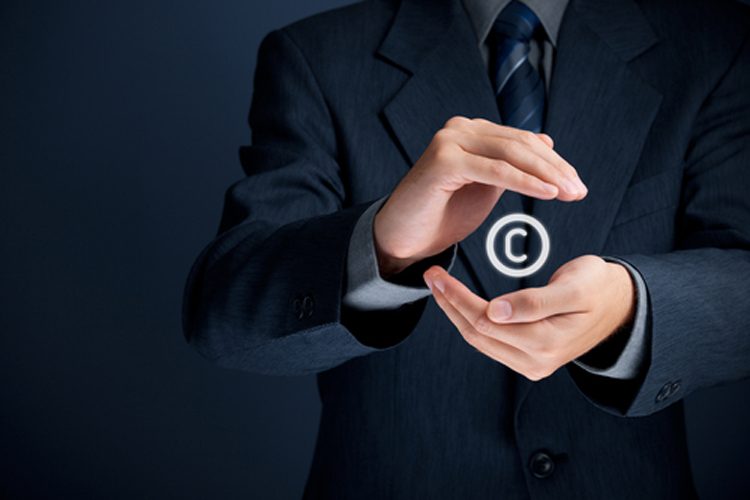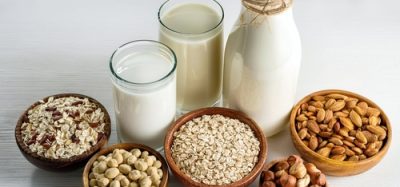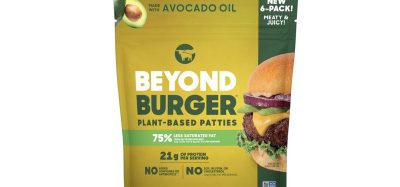Protecting intellectual property in the food and drink industry
Posted: 26 March 2019 | Laura Clews | No comments yet
Laura Clews looks at the world of patents and intellectual property rights.


Food and drink companies face a multitude of challenges in their quest to attract and retain customers. In the search for a competitive edge, companies invest heavily in research and innovation in order to produce items with the requisite taste, mouthfeel, appearance and nutritional value whilst simultaneously controlling production costs. In addition, there is the added pressure of changing consumer trends, such as the rise in vegetarianism and veganism, alcohol-free drinks, and healthier versions of comfort foods, whilst meeting new governmental policies and requirements: quite the raw deal.
The ability to meet such requirements can provide companies with a competitive advantage. The question then is how can they maintain this advantage, and how can they prevent competitors reaping the rewards of their research and investment?
There are typically two methods used within the food and drink industry to protect intellectual property: trade secrets and patents. Trade secrets can be useful where it is difficult (if not impossible) to derive the ingredients or process used to produce the food or drink product.
However, trade secrets provide no protection if another company legitimately produces the same product, manufacturing process or simply reverse engineers the product produced.
Patents may therefore provide a better form of protection where it is possible to derive the recipe (or method of manufacture) from the food or drink product itself e.g. where a recipe or composition could be determined by simply analysing the end product.
So, what can be protected within the food and drink industry; and what steps can you take to protect the IP on your plate?
What can be protected within the food and drink industry?
Suitable food and drink products may include those with an improved taste, texture or appearance whilst reducing fat or sugar content; combinations of ingredients producing a synergistic effect; a non-obvious substitution for a commonly used ingredient (e.g. a reduction in E-numbers); and methods of altering the flavour profile of food and drink products, to name just a few examples of eligible contenders.
Processing methods within the food and drink industry can also be protected, whether these relate to more cost-effective manufacturing methods; methods of providing improved mixing of ingredients; or new process steps which provide an unexpected result in the product.
Given the increased desire to produce environmentally friendly products, new environmentally friendly or biodegradable packaging may also be patentable.
Why patents can help?
A patent is an intellectual property right granted by a specific country’s government for a limited time period, typically 20 years from the filing date. A patent enables the owner to prevent third parties from making; using; offering for sale; selling; keeping; or importing the patented invention within the territory for which the patent has been granted. For a specific process, the owner has the right to prevent third parties from using or offering for use that process within the relevant territory without the patent owner’s consent.
What’s the best protection for your invention?
Before filing a patent application it is advisable to review your business strategy and consider how your IP ties into your commercial aims.
Patenting inventions can be a costly process, especially as the number of territories in which you require protection increases, and so it is worth considering which territories can most effectively support your business. For example, where are you planning to sell your product or use the process?
If you do not wish to exploit the IP yourself, where might you wish to licence the product/process? In considering the actions of third parties, are there particular counties in which you wish to prevent a competitor from exploiting your invention?
Applications in Europe can be filed via a European patent application at the European Patent Office (EPO) enabling patent protection in up to around 40 countries on the basis of a single application. An alternative route is the Patent Cooperation Treaty (PCT) which covers over 100 countries in a single initial patent application, and allows delayed selection of countries such as US, India, China and Japan as well as the EU.
What criteria do I need to meet in order to get a patent granted?
In general, to obtain a patent, the IP must be novel, inventive and capable of industrial application.
Novelty
A claimed invention cannot have been publically disclosed before the date on which the application was filed. The assessment of novelty can be based on any public disclosure including scientific journals, published articles, presentations, sale of the product itself or displaying the product at a trade show (where it would be possible for someone to determine the novel features from the product itself). For this reason, it is essential that no details of the invention are publically disclosed before the date on which the patent application is filed. However, if disclosure is unavoidable, for example in investment meetings, it is advisable that non-disclosure agreements (NDA) are used.
Inventive step
The claimed invention must also be inventive, i.e. not obvious in view of what was known at the filing date of the patent application. The assessment of whether something is inventive is based on the knowledge of a skilled person within that field.
Industrial application
The claimed invention must be capable of exploitation within an industry. Most products and processes within the food and drink industry will meet this criterion.
After having met these three requirements, what are your next steps?
Filing a patent application
A patent application contains a description of the invention for which patent protection is sought and typically includes:
- a discussion of the background art;
- a statement of invention;
- examples;
- claims; and
- any relevant figures.
The background discussion outlines what was known in the field at the filing date of the application and any issues associated with the known products, processes and uses. If the claimed invention suggests its use will overcome or at least provide an improved effect on existing products, it is useful to know what existing issues there are.
The statement of invention defines the claimed invention. This section defines each feature of the claim and may also discuss possible alternatives to these features.
Examples are often provided to illustrate that the claimed invention can be put into practice. Where a particular advantage associated with the invention has been discussed, for example an improved taste with reduced sugar content, the examples can illustrate the improved effect compared to previous products.
The claims define the boundaries of the invention for which protection is sought. Typically, the first claim broadly defines the invention in order to obtain the broadest scope of protection possible.
Subsequent claims further define the features of the invention or include additional features, thereby narrowing the scope of protection.
Figures can also be included. These can include graphic illustrations of the claimed invention, flow diagrams illustrating a particular process or graphical representations of data produced through the analysis of the claimed product (or a product produced by a claimed process) compared to products and processes already known in that field.
Once the application has been filed, it is generally not possible to amend the application to redefine the invention, include addition information or correct errors. As such, if the application is poorly drafted, it can leave the applicant with little or no protection for their invention. The drafting of the patent application can therefore be almost as important as the invention itself and so it is always recommended to hire a patent attorney with the requisite qualifications and experience to ensure that the application is of value to your business.
Examination of the patent application
After filing, the application is searched and examined by a Patent Office Examiner. If the Examiner does not consider the patent application to meet one or more of the criteria required to grant a patent, a report detailing the objections raised is issued. One of the main roles of a patent attorney is to assess any objections raised by the Examiner and advise how best to address the objections raised, particularly in light of your business strategy.
Once a response has been filed, the Examiner reassesses the application. If the Examiner considers the application to now meet the necessary requirements, a patent will be granted, if not the Examiner will issue a further report.
So your patent is granted: then what?
It is a common belief that once a patent has been granted, there is no bar from manufacturing and selling the claimed product or using the claimed process – this is not always the case! A patent is a negative right, meaning that only allows you to prevent third parties from doing these acts within the territory for which the patent has been granted. It is possible that there may be other third-party patents which could prevent you using your product or cover upstream or downstream processes which you are planning to use.
Accordingly, before commercialising your product or process it is advisable to consider such third-party rights. This can be done by requesting a freedom to operate search (FTO). If any potentially relevant patents or applications are found, a patent attorney can analyse these documents in view of your commercial products and/or processes. If these documents are considered relevant it may be possible to design around them; seek a licence from the rights holder; seek to invalidate the third-party rights or even, depending on the age of those rights, simply wait for them to expire.
If you believe you have developed valuable commercial IP, it is highly advisable to consult a patent attorney for more detailed information on identifying and protecting the intellectual property in your innovation.
Laura Clews is an Associate at top tier intellectual property law firm, Mathys & Squire LLP, and works with both large and small food businesses on a range of IP related areas.
Related topics
Intellectual property, New product development (NPD), Product Development, Research & development









